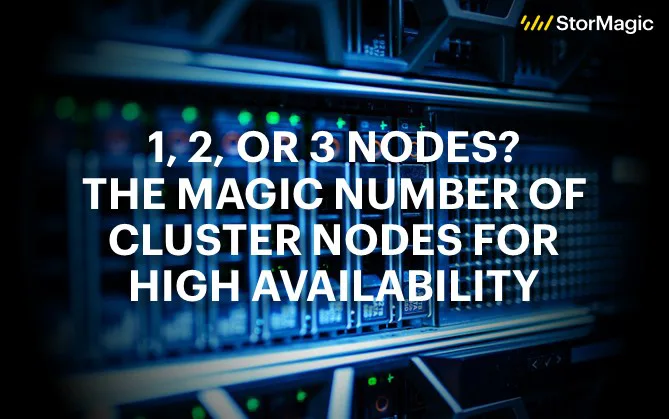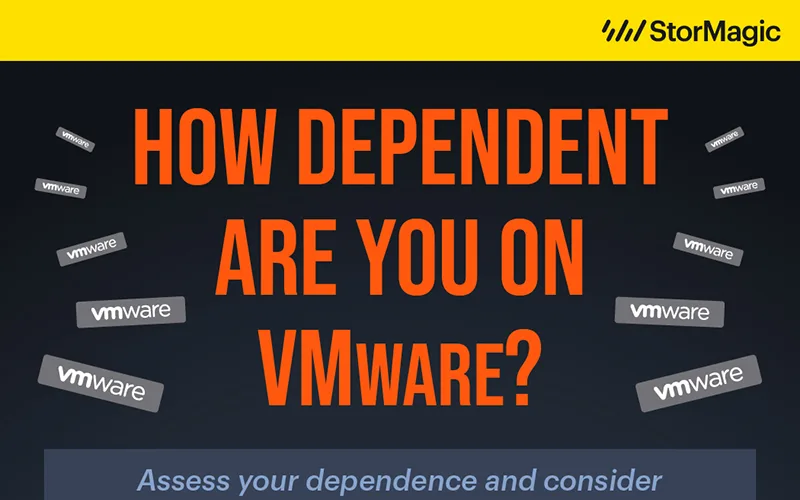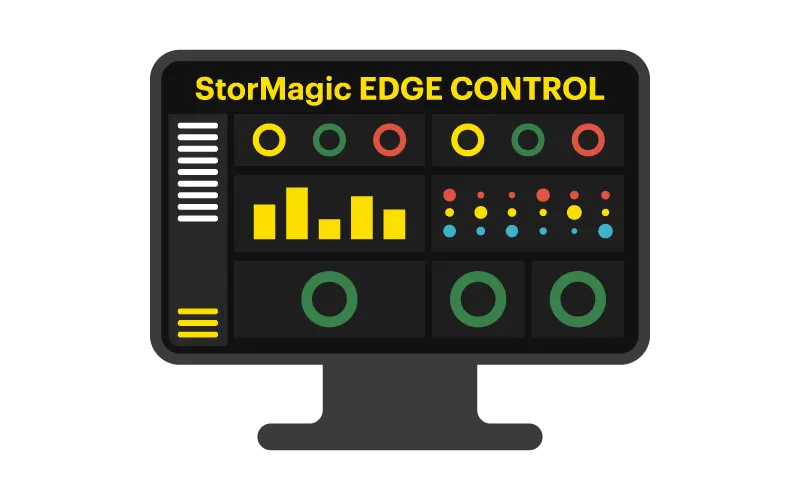What is the right number of nodes for software-defined storage server clusters? Is a single node enough to create a reliable and robust solution or is it better to have more?
In this blog we’ll examine the use cases for one, two, and three-node software-defined storage solutions, their benefits, and their drawbacks.
The Loneliest Number – Why is a single-node cluster inefficient?
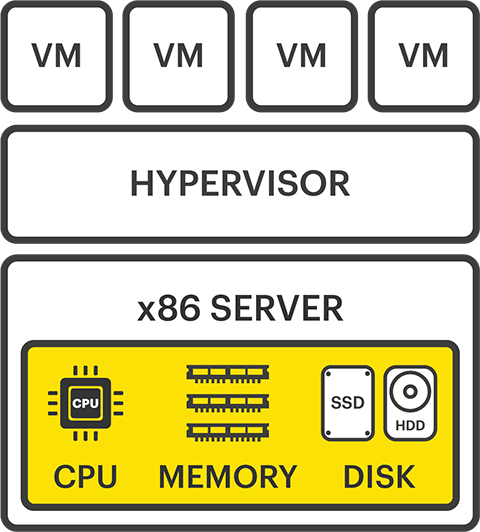 It’s not just Three Dog Night who made a strong argument against the number one. When it comes to virtual storage, for many reasons, one simply will not do. Still, some may opt for this one-node hyperconverged storage solution for a few reasons:
It’s not just Three Dog Night who made a strong argument against the number one. When it comes to virtual storage, for many reasons, one simply will not do. Still, some may opt for this one-node hyperconverged storage solution for a few reasons:
Budget Constraints
Companies with tighter budgets and data storage requirements like small businesses or startups may opt for single-node clusters initially to keep costs low. However, as their data needs grow, many will consider opting for solutions with more nodes for greater performance and reliability.
Non-Critical Data
Some organizations have non-critical data that, while important, doesn’t require high availability, redundancy, or real-time access. In such cases, a single-node cluster might be sufficient.
Testing, Development, and Short-Term Projects
In a testing or development environment where high availability and redundancy are not crucial, single-node clusters can make sense over a multi-node solution which would be more costly.
The same can be said for situations where data storage needs are temporary or short-term, such as events or projects with a defined lifespan. A good example of a case like this would be an educational institution or research project with a limited budget.
Back-Up or Archiving
Another example of when a single node could be used is when the data being created is not frequently accessed but needs to be retained for compliance or historical reasons.
Personal Use
Individuals or small groups might use single-node clusters for personal data storage, backup, or as a media server for home entertainment.
The Drawbacks of Single-Node Clusters
Outside the above use cases, using a single-node software-defined storage solution is discouraged for a number of reasons. Similar to their physical SAN predecessors, one-node solutions represent a single point of failure and offer no high availability. As such, their limited fault tolerance mechanisms mean a hardware failure causes much more disruption.
As there are no other nodes in the cluster to rely on, any data stored on the single server node is inaccessible while it is offline. Worse still, with no redundancy or failover capability, the longer that downtime gets, then the risk of data loss, and/or corruption only increases, leading to significant service or data availability issues.
Another drawback is that one-node software-defined storage solutions may lack the performance needed to handle the high demands of VMs and applications at distributed sites. With only one node running everything, usage of load balancing hypervisor features, where VMs are distributed among the nodes in a cluster, becomes impossible. Consequently, performance bottlenecks can arise, and business operations are then impacted, with slower data retrieval and processing.
For industries like law and manufacturing where specific levels of compliance and regulation related to data storage, availability and backup are a requirement, single-node clusters may be out of the question.
To address the issues of single-node clusters, many companies prefer multi-node storage solutions, such as edge computing architectures that involve two nodes or more, allowing for the creation of high availability clusters, efficient data replication, redundancy, and failover mechanisms.
Two is a magic number – Consider a two-node cluster solution
One of the most compelling reasons why organizations choose a two-node software-defined storage solution remains its ability to achieve high availability without having to overspend on hardware or sacrifice data resilience or redundancy.
Unlike single-node and physical SAN solutions where hardware failures all too often equate to data loss and unplanned downtime, a two node high availability architecture ensures minimal disruption through the creation of data redundancies. Data is replicated between both nodes, so should one server fail, the other is present to take over seamlessly without any loss of data or corruption.

Customers deploying two-node clusters also benefit from optimized performance thanks to the cluster’s ability to distribute workloads – known as load balancing. This feature in particular is crucial for applications requiring low latency to access data, especially when IO traffic spikes for extended period.
Maintenance and upgrades also become more straightforward with a two-node cluster, as users no longer need to worry about unnecessary downtime – simply take one node offline for maintenance while the other continues to handle data requests as normal.
Is Three a Crowd? – The right number for a multi-node cluster
Similar to a two-node solution, using three or more nodes in a storage infrastructure also provides several compelling advantages. Enhanced high availability or fault tolerance ensures applications continue running even in the event of two nodes going down.
The efficient distribution of workloads across nodes means better data performance and scalability can be achieved with this model. And geographic redundancy becomes feasible thanks to the easy distribution, access, and retrieval of data across multiple locations.
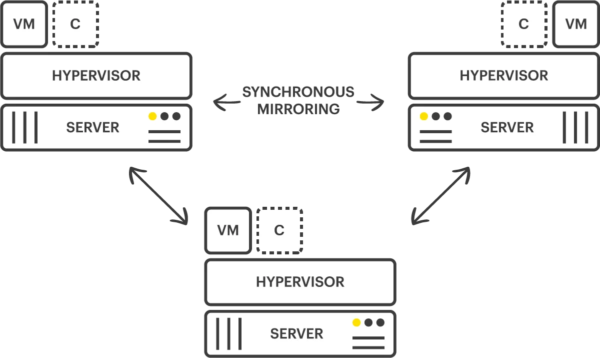
However, a major drawback to this model is cost. For smaller organizations in particular, or those planning to deploy at multiple sites, a solution of this size could prove to be far greater than their set budget.
Before purchasing a three or more-node solution, it’s advisable to think about workloads, how much budget there is to spend, and if the same levels of performance, high availability, and redundancy could be achieved using a smaller two-node solution instead.
So, which is best?
Though possible, it’s important to note that even in cases where budget is lacking, or data isn’t critical, organizations should carefully consider the risks associated with using a single-node cluster solution for their data storage.Those risks include a lack of redundancy and hardware failure.
Even if the data stored is not considered mission-critical, it’s still advisable to implement a 3-2-1 backup strategy and have disaster recovery plans in place. As data needs grow or data becomes more crucial, it’s advisable to migrate to more robust storage solutions that offer better reliability, scalability, and data protection like two-node software-defined storage.
StorMagic SvSAN: A Powerful, Cost-Effective Hyperconverged Storage Solution
Capable of achieving 100% uptime with ease using a lightweight two or three-node cluster, StorMagic SvSAN makes for a simple, flexible, and reliable software-defined storage solution.
SvSAN puts its customers in the driving seat, offering them the flexibility to tailor their storage infrastructure to their organization’s needs, and use any x86 server. SvSAN customers are also in charge of their choice of storage configuration, accommodating expansion without disruption, and keeping scaling for future growth simple.
For more information on StorMagic SvSAN, check out our SvSAN product page:

